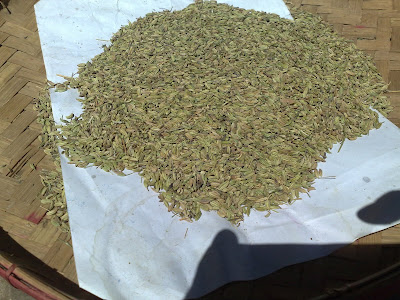ျငဳပ္ေကာင္းေစ့
OCHI: Indian black pepper prices will remain bullish if the report of International Pepper Community (IPC), an inter-government association of major pepper producing countries, is any indication. IPC pegs the size of new pepper crop in India in the range of 45,000-48,000 tonne with very limited carryover stock. Indian pepper production was estimated at 55,000 tonne last year. However, the exporters say it could have fallen short by 5000 tonne.
Though pepper has started arriving in the interior markets, they are briskly consumed by the local traders. The market price is ruling at the record level of $8,700 a tonne. According to IPC, the consumers are waiting for coverage from any source as there has been a crunch in supplies from Vietnam, Brazil and Indonesia. Vietnam's crop is considered good and the new crop is expected to hit the market during early February. The light berries have started arriving already.
"Vietnam has started booking at rates $8,200 per tonne for January, which is about $600 lower than Indian prices. To sell at that rate, Indian prices in the local market will have to come down by at least Rs 40 a kg from the current level of Rs 510-520 a kg. I don't see such a possibility in the next few weeks," said Jojan Malayil, CEO of exporting firm Bafna Enterprises.
He said the Vietnam crop could be higher than 1.35 lakh tonne estimated for the last season. IPC says that given the stock position with grinders, traders and all connected agencies, it is certain that the demand will emanate during the first quarter of 2014 and the price strata will be maintained. If Vietnam gets an offtake of more than 10,000 tonne for the first three months, then the price line will not recede.
Of the 6,300 tonne seized by the Food Safety and Standards Authority of India (FSSAI) on complaints of mineral oil contamination from NCDEX warehouses, the agency has been releasing small quantities that have been found clean. "Till now, around 50 tonne has been released. Another over 100 tonne is due for release," an FSSAI officer in Kochi said. This could soften the prices a bit.

























.jpg)















.jpg)




.jpg)



